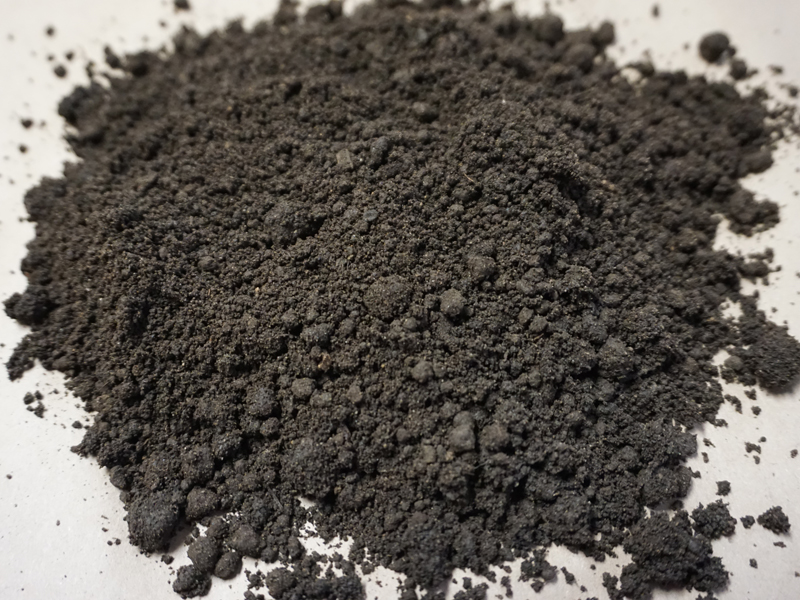Nitrogen from biosolids can help urban soils and plant growth
July 8, 2019 - Adityarup “Rup” Chakravorty
The “zero waste” trend could have a friend in the form of biosolids. Biosolids are the materials produced after domestic waste is treated in urban wastewater systems. In the past, most of this solid material was transferred to landfills. But, processes developed over the past few decades can create “exceptional quality” biosolids.

These new “EQ” biosolids are low in pollutants and pathogens, but high in nutrients. They can be applied to agricultural or urban soils needing fertilizer and other soil health improvements. That reuses a former “waste” material – and helps the environment along the way.
Biosolids are valuable because they are rich in nitrogen, a key nutrient for plants. But, only a fraction of the nitrogen in biosolids used as fertilizer becomes available to plants. This fraction is called bioavailable nitrogen.
“We need to know how much nitrogen becomes bioavailable when we add biosolids to the soil,” says Odiney Alvarez-Campos, a researcher at Virginia Tech. “We want to supply enough for healthy crop growth and yields, but not surplus nitrogen.”
That’s because too much nitrogen can pollute the environment. It can enter surface and groundwater and affect aquatic ecosystems. “It’s a balance between supporting plant growth, while not polluting,” says Alvarez-Campos.
In a new study, Alvarez-Campos and her colleagues tested how much of the nitrogen in different biosolid products became bioavailable in an urban soil. They discovered a complicating factor. The degraded nature of urban soils might reduce biosolids’ nitrogen availability for plants.
“Urban soils are often compacted, degraded soils. They can have low organic matter and nutrients,” says Alvarez-Campos. Human activities, like construction and heavy vehicle traffic, can degrade urban soils.
“Biosolids have what we need to help restore these soils,” she says. For example, the organic matter in biosolids can reduce soil compaction. That can make soils easier to till and help plants’ roots grow. Biosolids can also increase water infiltration and retention in soils, which are important for plant growth.
The researchers tested five different biosolids products. All the products were of “exceptional quality”. Some of the biosolids had other materials mixed in. These materials included dry organic and mineral material. The goal was to dry the biosolids.
“One of the main challenges faced when applying biosolids to urban areas is their high moisture content,” says Alvarez-Campos. Biosolid products that have high moisture are harder to transport, handle, and spread.
The study showed that biosolids that are not mixed with woody materials yield more bioavailable nitrogen than biosolids products mixed with woody materials. The low organic matter and high clay content of the urban soil reduced the amount of bioavailable nitrogen from biosolids. They also reduced the effectiveness of laboratory methods to estimate available nitrogen.
In addition, the researchers homed in on one commonly used laboratory method that provided best estimates of nitrogen availability from biosolids. This method is called 7-day anaerobic incubation. “It showed the greatest potential to be used as an indicator of a biosolid’s nitrogen availability,” says Alvarez-Campos.
Knowing that nitrogen availability might be lower in degraded soils is key. “It will help adjust biosolid application rates to match the degree of soil degradation,” says Alvarez-Campos.
These findings are an important first step. The researchers are evaluating the reliability of quick tests to estimate nitrogen availability from biosolids applied to urban soils. They are also looking to expand their study area. “In this study, we used a soil representative of urban soils in southwest Virginia,” she says. Future studies will evaluate the impact of biosolid applications across a greater variety of urban soils and landscapes.
“Recycling biosolids into the soil is one of the most sustainable ways to manage waste,” says Alvarez-Campos. “It returns carbon and nutrients – like nitrogen – to the soil, and helps vegetation grow.”
If biosolids are not applied to agricultural fields or urban landscapes, they are disposed of in landfills or incinerated. “When applied to soils, biosolids become a valuable resource rather than an unpleasant waste,” she says.
This research was recently published in the Soil Science Society of America Journal. Funding was provided by Metropolitan Washington Council of Governments, DC Water, the Water Environment Research Foundation, the Virginia Agricultural Experiment Station, and the Hatch Program of the National Institute of Food and Agriculture, U.S. Department of Agriculture.
